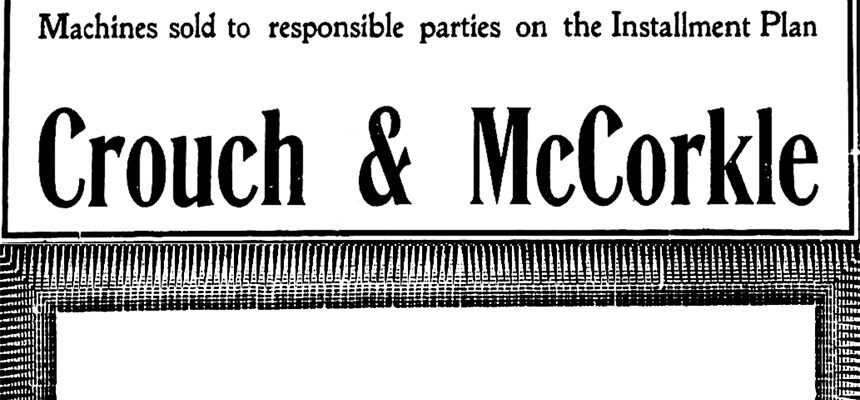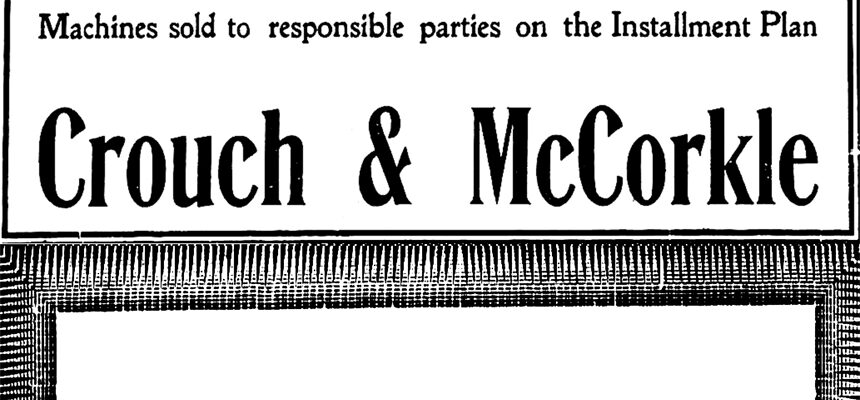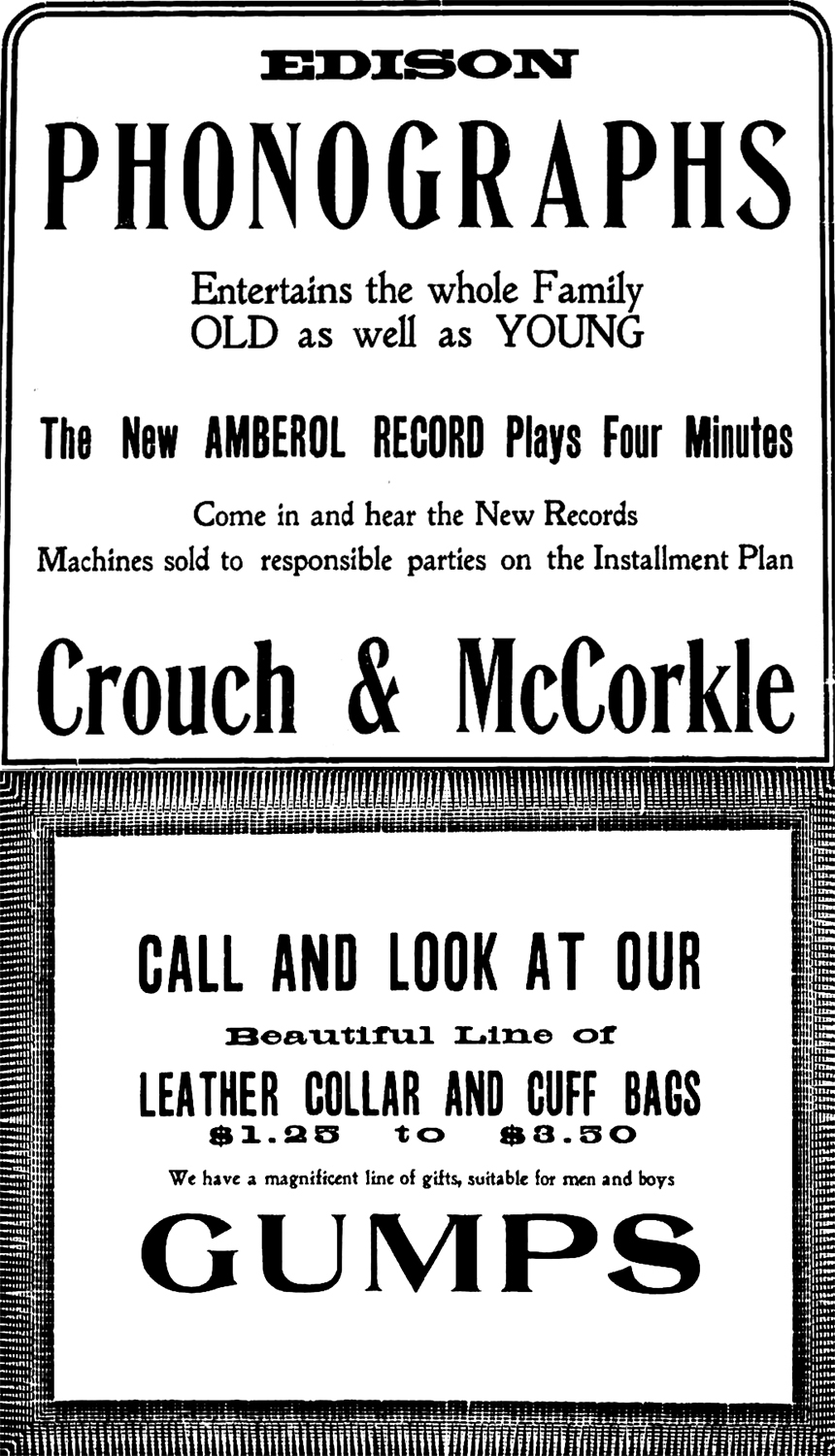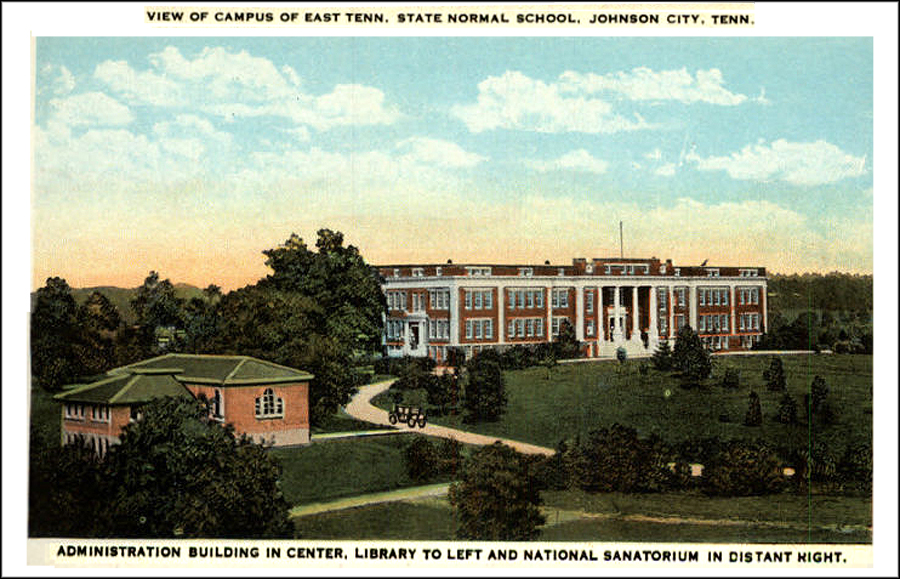A December 1908 local newspaper had this to say about Johnson City's anticipated growth: “To say that Johnson City will grow by leaps and bounds during the coming year will be stating nothing more than the truth and to back up the assertion herewith give you some of the facts gathered from those who know.”
In the first place, bids for the construction of the new government building were planned. This was not identified but likely at 103 Tipton Street between Spring and Buffalo streets.
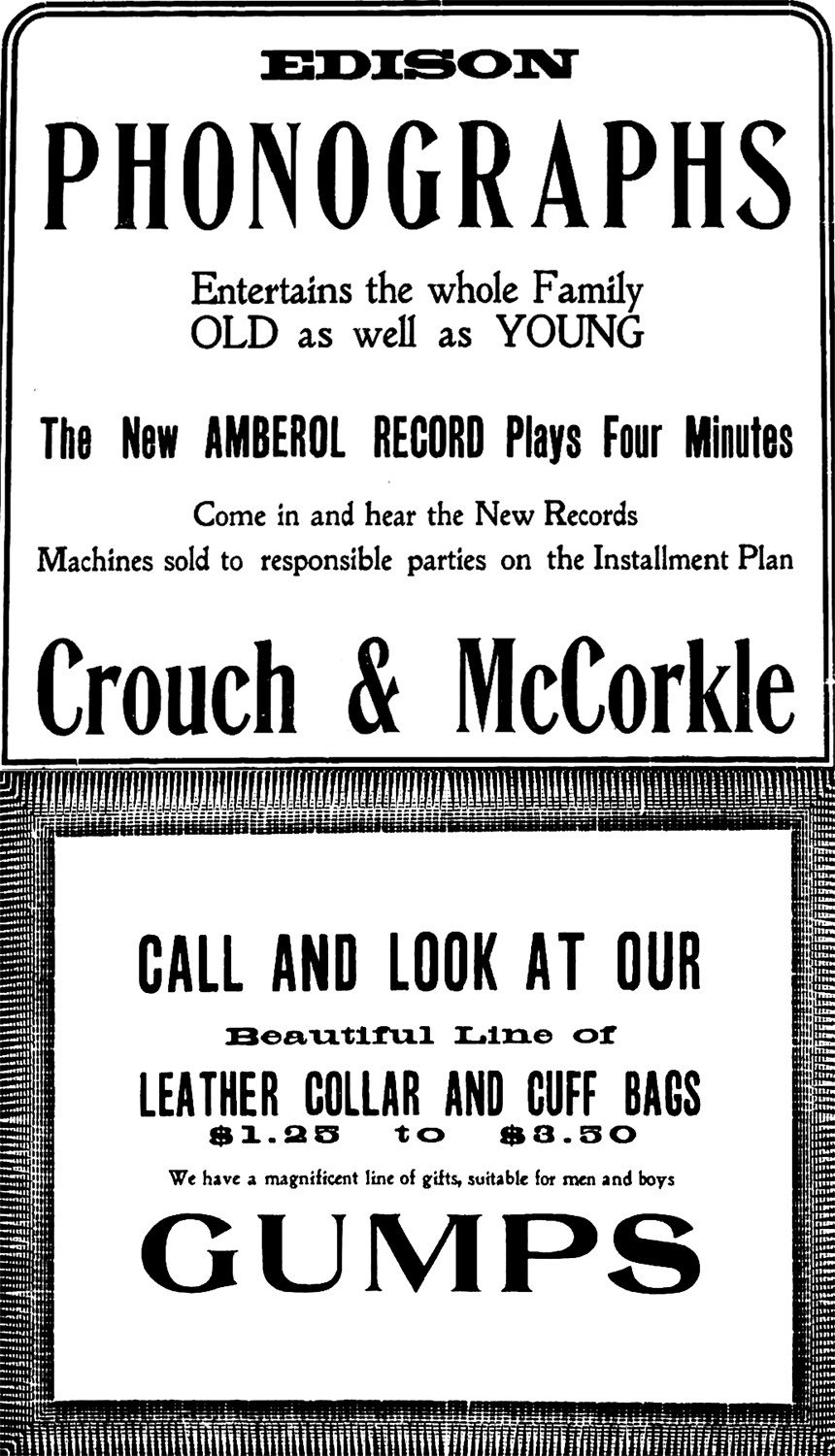
Johnson City 1908 Advertisements
Congressman Brownlow asked Congress for additional $20,000, which made a total of $105,000 to put in the building, outside, foundation, cement sidewalks and basement.
Mr. Carter began the foundation work promptly after the contract was awarded and the plans received. Walnut Street was paved and cement sidewalks laid on both sides from Buffalo up to West End Heights.
A property was purchased at the corner of Buffalo and Walnut by some prominent citizen, who build a $10,000 model market house and grocery. Work on this venture began immediately.
In the early spring 1909, Mr. Carter erected a $50,000 hotel (not the Carnegie Hotel, which was built by Gen. Wilder in 1891 for $125K) possibly the Pardue (Windsor) Hotel) that provided Johnson City with modern and spacious accommodations.
A modern office building was also begun and finished during that same year. Also, a large store building was erected to be a model department store.
Work was started and finished on the new Southern Train Depot, which was believed would join in and build a large union depot. Plans were also on foot to build in the Carter Addition a thoroughly equipped opera house.
The above items were cold, hard facts and it was but a matter of a few days until most of the work was begun. The $100,000 flour and feed mill (Model Mill) was an assured fact. This project was just as certain as the building of a new Post Office.
The parties had been waiting on the finishing of the CC&O Railway to a point where they could connect with the N&W and C&O railroads and finish through to Bostic, NC in order to get a milling in transit rate on their shipments of grain from the west. This was targeted to be built the following spring and summer in time for the wheat harvest.

Johnson City 1908 Advertisement
Johnson City 1908 AdvertisementsNext came the extension of the streetcar line. Plans called for Johnson City and Jonesboro to be connected by a modern interurban electric street railway.
Johnson City 1908 AdvertisementsThe present streetcar line extension would go forward at an early date to run down Walnut street, up by Mr. Carter's home, which he was in the process of building, then down Maple street to Buffalo, making a complete loop of the Carter properties.
An extension was also to be made, provided Congress consented, so that the line would run out Walnut to Soldiers' Home, going through the grounds, making a connection with the present terminus, thus looping through the home grounds. Streetcars would then be running in both directions.
Mr. M.L. Fox, manager for the Unaka Corporation had a complete drawing made of' the entire property, giving lots and numbers, from which maps could be made and given to real estate agents of the city to sell. It was said that fully half a million dollars would be spent in the Carter addition in improvements during the year 1909.
Mr. Carter's plans called for a through train schedule to be put on between Dante, VA. to Bostic, NC and a special train from Dante, Va., to Johnson City and return, making a local train service in both directions.
The Commercial Club got busy to advertise the advantages of Johnson City with Mr. Carter and to help make a city of 25,000 by 1911.
Regrettably, not everything materialized in this glowing report. The streetcar line from Johnson City to Jonesboro never became a reality and the projection of Johnson City having a population of 25,000 was a bit of a stretch. That accomplishment, according to former city historian, Ray Stahl, did not occur until 1930.
